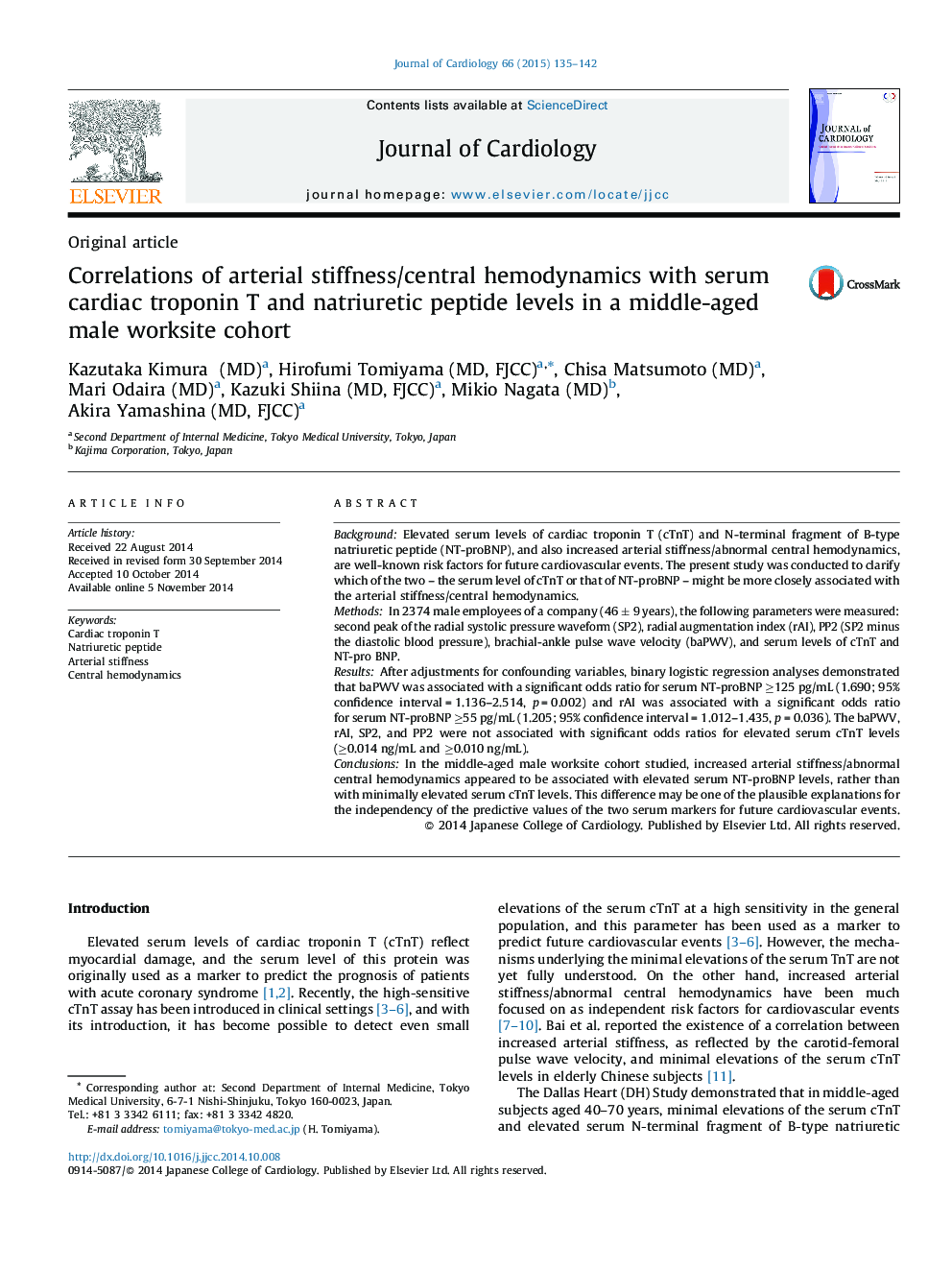| Article ID | Journal | Published Year | Pages | File Type |
|---|---|---|---|---|
| 2962945 | Journal of Cardiology | 2015 | 8 Pages |
BackgroundElevated serum levels of cardiac troponin T (cTnT) and N-terminal fragment of B-type natriuretic peptide (NT-proBNP), and also increased arterial stiffness/abnormal central hemodynamics, are well-known risk factors for future cardiovascular events. The present study was conducted to clarify which of the two – the serum level of cTnT or that of NT-proBNP – might be more closely associated with the arterial stiffness/central hemodynamics.MethodsIn 2374 male employees of a company (46 ± 9 years), the following parameters were measured: second peak of the radial systolic pressure waveform (SP2), radial augmentation index (rAI), PP2 (SP2 minus the diastolic blood pressure), brachial-ankle pulse wave velocity (baPWV), and serum levels of cTnT and NT-pro BNP.ResultsAfter adjustments for confounding variables, binary logistic regression analyses demonstrated that baPWV was associated with a significant odds ratio for serum NT-proBNP ≥125 pg/mL (1.690; 95% confidence interval = 1.136–2.514, p = 0.002) and rAI was associated with a significant odds ratio for serum NT-proBNP ≥55 pg/mL (1.205; 95% confidence interval = 1.012–1.435, p = 0.036). The baPWV, rAI, SP2, and PP2 were not associated with significant odds ratios for elevated serum cTnT levels (≥0.014 ng/mL and ≥0.010 ng/mL).ConclusionsIn the middle-aged male worksite cohort studied, increased arterial stiffness/abnormal central hemodynamics appeared to be associated with elevated serum NT-proBNP levels, rather than with minimally elevated serum cTnT levels. This difference may be one of the plausible explanations for the independency of the predictive values of the two serum markers for future cardiovascular events.
